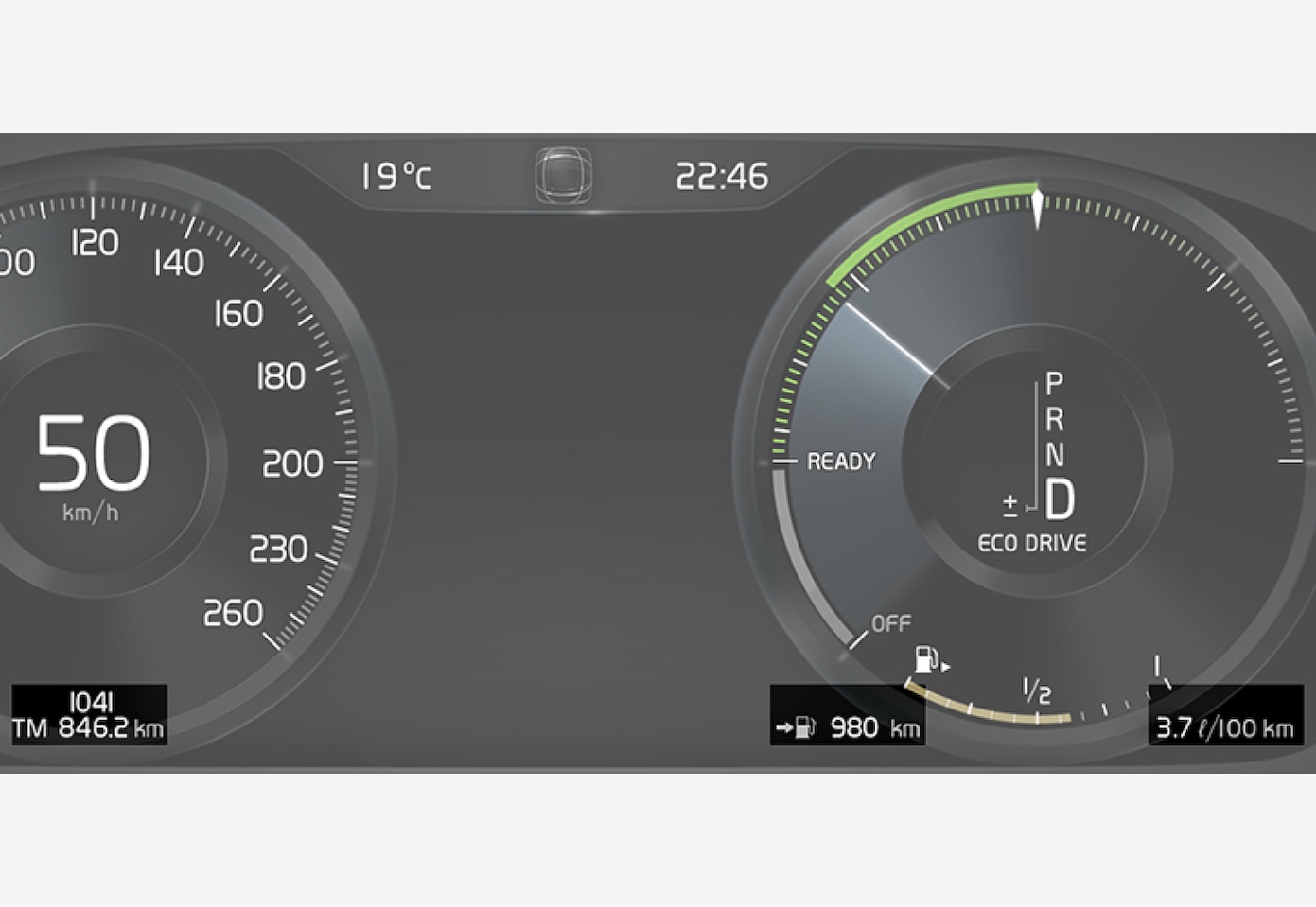In order to facilitate fuel-efficient driving, information is recorded about both instantaneous and average fuel consumption. The information from the trip computer can be shown in the driver display.

The following meters are included in the trip computer:
- Trip meter
- Odometer
- Instantaneous fuel consumption
- Distance to empty tank
- Distance to empty battery
- Tourist - alternative speedometer
Units for distance, speed, etc. can be changed via system settings in the centre display.
Trip meter
There are two trip meters, TM and TA.
TM can be reset manually and TA is reset automatically if the car is not used for at least four hours.
The following information is registered while driving:
- Mileage
- Driving time
- Average speed
- Average fuel consumption
The values apply from the trip meter's latest reset.
Odometer
The odometer records the car's total mileage. This value cannot be reset to zero.
Instantaneous fuel consumption
This gauge shows the fuel consumption that the car has at the moment. The value is updated approximately every second.
Distance to empty tank

The trip computer calculates the remaining mileage with the fuel available in the tank.
The calculation is based on the average fuel consumption over the last 30 km (20 miles) and the remaining drivable fuel quantity.
When the gauge shows "----", there is not enough fuel left to be able to calculate the remaining mileage. Refuel as soon as possible.
Note
An economic driving style generally results in a longer driving distance.
Distance to empty battery

The approximate distance that can be driven with the remaining amount of energy in the hybrid battery is indicated adjacent to this symbol.
The calculation is based on the average consumption of normally loaded vehicle, during normal driving and taking into account whether the air conditioning (AC) is switched on or off. When changing between the Hybrid and Pure drive modes, the calculated distance increases since the Pure mode has reduced climate settings (ECO climate).
No guaranteed range on electric power remains when the gauge shows "----".
Note
An economic driving style generally results in a longer driving distance.
Start value for fully charged hybrid battery
Since it is difficult to anticipate driving style and other factors that affect the range for electric operation, Volvo has decided to use a start value when the car is fully charged. The start value indicates an up-to figure instead of a forecast for the range for electric operation. The difference in start value between Hybrid and Pure is due to the car being allowed to use more energy from the hybrid battery in Pure mode, as well as that the car changes over to ECO climate.
Mileage for electric operation
In order to achieve the longest possible mileage for electric operation, the driver of an electrically powered car also has to think about energy conservation. The more consumers there are (stereo, electric heating in windows/mirrors/seats, very cold air from the climate control system, etc.) that are active - the shorter the potential mileage.
Note
Tourist - alternative speedometer
The alternative digital speedometer makes it easier to drive in countries where speed limit signs are in a different unit than that shown in the car's instruments.
The digital speed is then shown in the opposite unit to that shown in the analogue speedometer. If the analogue speedometer is graduated in mph, the digital speedometer shows the corresponding speed in km/h and vice versa.